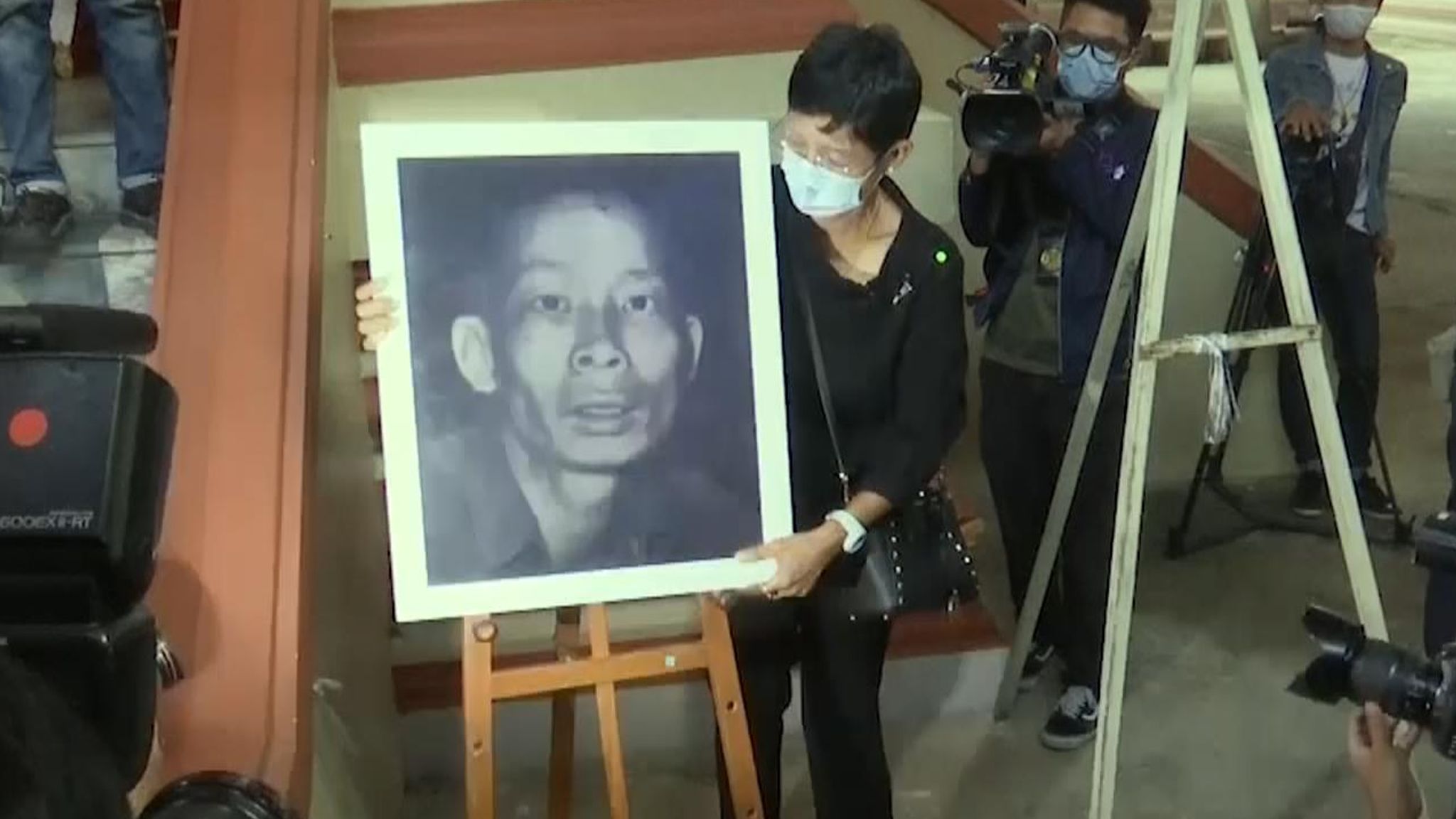NONTHABURI, Thailand -- for many years, some Thai parents warned their naughty children that if they didn’t behave, Si Ouey would come eat their livers. If the threat of a ghostly visit from the executed child killer, long called a cannibal, proved ineffective, those children could always be taken to ascertain Si Ouey.
After all,
his mummified corpse — gnarled and blackened — for years stood on
display during a glass case within the Forensic Museum at Bangkok’s
Siriraj Hospital.
In recent years, however, doubts were raised about whether the person called Thailand's first serial murderer was given justice and a campaign was launched to a minimum of giving him. On Thursday, six decades after his execution, that at long last occurred.
Nine Buddhist monks at a temple north of Bangkok chanted prayers and
paper flowers were placed ahead of Si Ouey's coffin, which was then
moved to the crematorium, where the
top of the Corrections Department lit the hearth.
Hospital officials also as residents of a town where he once lived looked on.
Si
Ouey, a Chinese immigrant who worked as a gardener, was reportedly
caught red-handed in 1958 during a forest in Rayong province burning the
body of an 8-year-old boy who
Police were quick to pin on him a
minimum of five previous unsolved murders of youngsters dating back to
1954, some in other provinces.
Startling news accounts itemized how he probably savored eating their hearts, livers, and digestive organs.
Si Ouey was said to possess told police that he acquired a taste for human flesh during war II, when as a Chinese soldier during a unit besieged by the Japanese he survived by eating the bodies of these killed in battle.
He was tried and located guilty of murder and executed by the firing party on Sept.His body was then given over to Siriraj Hospital for what was depicted as clinical investigation.
His story soon became a daily staple of horror books and B-movies. The truth about Si Ouey's case, however, is difficult to verify. Police at the time had gained notoriety for beating admissions out of suspects, and mainstream papers handed out newspaper-style melodrama.
Si Ouey was also at an obstacle because he was a poor immigrant, coming back from China in 1946 at age 19.
Thailand's
military governments at the time were keen fire up anti-Chinese
sentiment within the conflicting atmosphere and sometimes blamed immigrants for crime and unrest.
Doubts about Si Ouey’s guilt only garnered
much interest within the past decade, after several TV
documentaries acknowledged discrepancies within the evidence, such one
among his victims still having her
organs regardless of Si Ouey's admitting to eating them. Pharaoh Chakkraphattranan, who heard the warnings about Si Ouey as a
the boy saw one among those programs and it led him in 2018 to start out a
web petition asking
that Si Ouey not be labeled a cannibal which he tends a correct funeral.
“I went back thereto museum and that I felt different watching him,” Pharaoh said.
“Before I just thought I used to be watching a man-eater, now I see a victim who was stripped of his rights and dignity.
Whether or not he committed the crime, his body shouldn’t be displayed within the glass box.”
Siriraj The hospital reviewed the matter last year, removed the check-in his case calling him a “cannibal" last June then withdrew his body from public view last August.
Authorities at long last reported for the current month that he would be incinerated.
Wanna Thongchin, whose parents employed Si Ouey, also embraced the cause and alongside other residents of the town where he once lived lobbied for a correct funeral.She said her folks consistently disclosed to her Si Ouey was guiltless.
“Even though he wasn't our loved one, we counted him together,” Wannapa said Thursday at Si Ouey's funeral.



Post a Comment